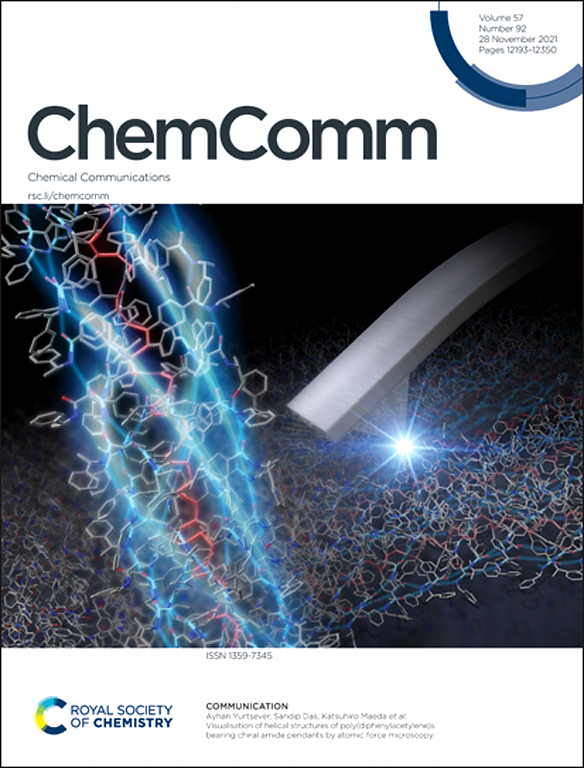基于简单制备的蓝藻-海藻酸钠-壳聚糖复合水凝胶的湿电发生器
IF 4.2
2区 化学
Q2 CHEMISTRY, MULTIDISCIPLINARY
引用次数: 0
摘要
我们通过蓝藻-海藻酸钠-壳聚糖水凝胶加载聚多巴胺修饰的非织造基质,开发了湿润发电材料。在环境条件下,该器件的输出电压为0.48 V和2 μA。从被破坏的蓝藻中释放的多糖和蛋白质促进了电荷分离。当串联在一起时,这些材料能够为发光二极管供电。本文章由计算机程序翻译,如有差异,请以英文原文为准。
Moisture-electric generator based on a facilely prepared cyanobacteria–sodium alginate–chitosan composite hydrogel
We developed moisture-enabled electricity generation materials by loading polydopamine-modified nonwoven substrates with cyanobacteria–sodium alginate–chitosan hydrogels. Under ambient conditions, the device produced an output of 0.48 V and 2 μA. Polysaccharides and proteins released from disrupted cyanobacteria facilitated charge separation. When connected in series, the materials were able to power light-emitting diodes.
求助全文
通过发布文献求助,成功后即可免费获取论文全文。
去求助
来源期刊

Chemical Communications
化学-化学综合
CiteScore
8.60
自引率
4.10%
发文量
2705
审稿时长
1.4 months
期刊介绍:
ChemComm (Chemical Communications) is renowned as the fastest publisher of articles providing information on new avenues of research, drawn from all the world''s major areas of chemical research.
 求助内容:
求助内容: 应助结果提醒方式:
应助结果提醒方式:


